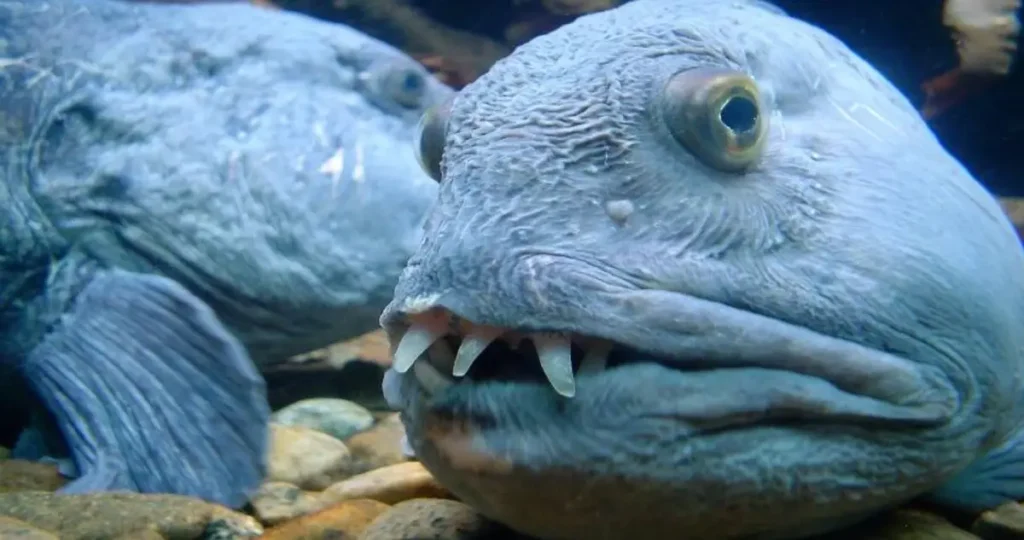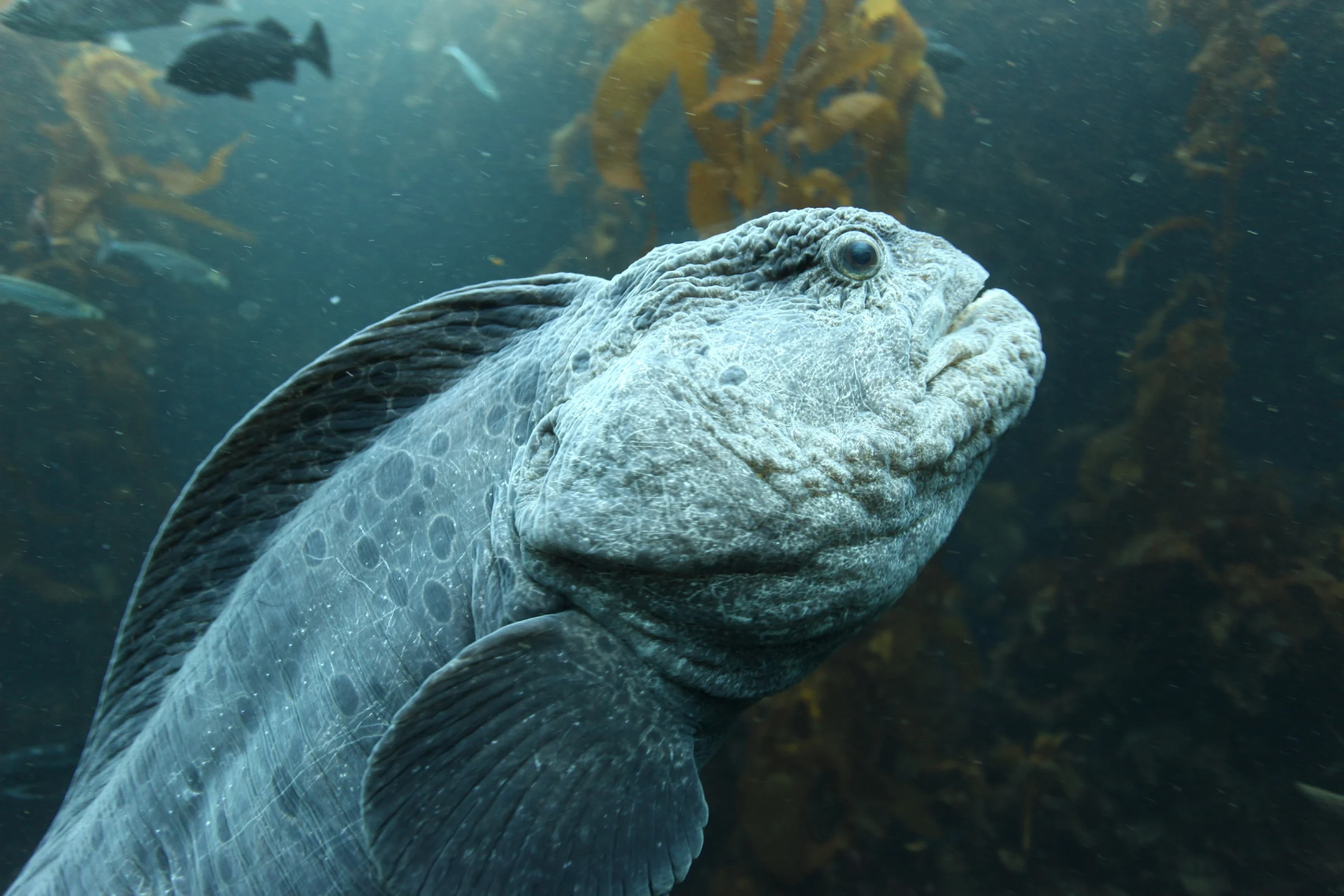Discovering the Wolf Eel: A Mysterious Creature of the Deep
The ocean, covering over 71% of Earth’s surface, remains one of the most enigmatic and least explored frontiers on our planet. Amidst its vast and largely uncharted depths, we encounter intriguing and sometimes misunderstood inhabitants. One such creature is the wolf eel (Anarrhichthys ocellatus), a fascinating fish that captures the imagination with its striking appearance and intriguing behaviors. In this blog, we delve into the world of the wolf eel, shedding light on this mysterious denizen of the deep.
The Wolf Eel: Not What It Seems
Despite its name and appearance, the wolf eel is not an eel but a member of the wolffish family. Its long, slender body and eel-like movements often lead to confusion, but this remarkable fish belongs to a distinct group known for its robust features and predatory nature.

Key Characteristics of the Wolf Eel
- Appearance: The wolf eel has a serpentine body that can grow up to 8 feet long, covered in smooth, slimy skin. Its most striking feature is its sharp, formidable teeth, which it uses to capture and crush prey.
- Habitat: These elusive creatures are typically found in the rocky reefs of the North Pacific Ocean, from the coasts of Japan and Korea to the northern parts of the Pacific coast of North America. They prefer to hide in rocky crevices and underwater caves, where they feel safe and secure.
- Diet: Wolf eels are carnivorous and have a diet that primarily consists of crabs, sea urchins, and other benthic invertebrates. Their powerful jaws and sharp teeth make them effective predators, capable of cracking the hard shells of their prey.
- Behavior: Despite their fearsome appearance, wolf eels are known to be relatively shy and reclusive. They often form monogamous pairs that live together in the same den, showcasing an intriguing aspect of their social behavior. This lifelong partnership is rare in the animal kingdom and adds to their unique charm.
The Ocean’s Unexplored Depths
The wolf eel is just one example of the myriad of fascinating creatures that inhabit the ocean’s depths. Despite the advances in technology and exploration, we have only explored less than 5% of the ocean’s vast expanse. This leaves an immense portion of the marine world shrouded in mystery, with countless species and ecosystems yet to be discovered.

The Importance of Ocean Exploration
Exploring the ocean’s depths is crucial for several reasons:
- Biodiversity: Understanding marine biodiversity helps us appreciate the complexity of ocean ecosystems and the roles different species play in maintaining ecological balance.
- Conservation: Discovering new species and habitats informs conservation efforts, helping to protect vulnerable areas and address environmental challenges such as climate change and pollution.
- Scientific Knowledge: Ocean exploration contributes to our knowledge of marine biology, geology, and chemistry, leading to new discoveries and innovations that can benefit human society.
- Inspiration: The mysteries of the deep ocean inspire curiosity and wonder, driving scientific inquiry and fostering a sense of stewardship towards our planet’s natural resources.
Conclusion
The wolf eel is a fascinating example of the incredible diversity and mystery that the ocean holds. As we continue to explore and understand the depths of our planet’s oceans, we uncover new wonders and gain valuable insights into the intricate web of life beneath the waves. The ocean’s vast, unexplored territories remind us of the boundless potential for discovery and the importance of preserving these enigmatic realms for future generations.
As we delve into the mysteries of the deep, let us marvel at creatures like the wolf eel and remain inspired to protect and explore the ocean’s remaining frontiers. The more we learn about these hidden worlds, the more we appreciate the delicate balance of our planet’s ecosystems and the incredible life forms that inhabit them.






